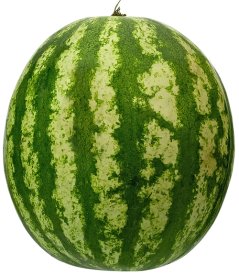Wageningen, The Netherlands
January 26, 2015
Smart new combinations of state-of-the-art molecular techniques mean that breeding programmes can be accelerated dramatically: it may soon take only two years instead of the current five or ten to develop a new variety. DNA sequencing data can already be associated directly with important hereditary traits such as disease resistance, taste and shelf life.
 “Without this level of understanding breeding programmes have been time-consuming and not very specific,” says Dr Sander Peters (pictured), bio-informatics scientist at Wageningen UR. “By properly analysing the information from the sequence data, breeders can now carry out much more focused searches for desired properties and create far more focused combinations of breeding parents. This knowledge is worth a great deal and we’re currently working on melons together with private sector companies.”
“Without this level of understanding breeding programmes have been time-consuming and not very specific,” says Dr Sander Peters (pictured), bio-informatics scientist at Wageningen UR. “By properly analysing the information from the sequence data, breeders can now carry out much more focused searches for desired properties and create far more focused combinations of breeding parents. This knowledge is worth a great deal and we’re currently working on melons together with private sector companies.”
100 Melon Genome project
Peters leads the new 100 Melon Genome project, in which Wageningen UR is already cooperating with five breeding companies, including East-West Seed from Thailand. The coordinator of the project is Dr Rob Dirks from Rijk Zwaan Breeding BV. Professor Hans de Jong of Wageningen University contributes the genetic expertise, while Willem van Dooijeweert of the Centre for Genetic Resources (CGN) provides the melon collection. Together, the participants will unlock the genomes of one hundred melon varieties and five wild relatives. The project is a successor to the highly successful 150 Tomato Genome Sequencing project, but with new innovations at its disposal.
Melons with longer shelf life and better taste

Melons are an important food crop worldwide, worth 335 billion US dollars in 2011. A focus on high yields in the breeding of melon varieties has, however, led to the loss of other important properties, such as resistance to fungi, viruses and insects, and drought tolerance. Shelf life has also suffered. “Harvested melons can be on the road for a week and almost spoiled by the time they arrive,” Peters points out. “Better durability enables transportation over long distances. Furthermore, there is demand for varieties with a thinner skin, smaller seeds and more flavour.
“While backcrossing with wild species allows these qualities to be passed on to new varieties, it also inadvertently results in many unwanted primitive features, such as small, sour fruits. Choosing the crossing parents very carefully – ensuring they have genomic structures that are compatible with each other – allows this problem to be overcome and the excess, unwanted DNA to easily be outcrossed again. This makes it easier to predict promising combinations in advance .”
Wild melons
One of the wild candidates is Cucumis melo var. dudaim, a fragrant small melon that is better known under the evocative name ‘Queen Anne's pocket melon’. This refers to a time before showers and washing machines when people would carry the melons under their clothes to smell better. The wild melons came from CGN, Wageningen’s depository of wild and primitive material. According to Peters, these collections are becoming increasingly valuable since the use of new materials collected in the wild was severely limited by international agreements in 2011 (see the Nagoya Protocol on Access and Benefit-sharing).
Technological revolution in plant breeding
Giant strides have been made recently in the sequencing and mapping of genomic structures. Plant breeding is entering a technological revolution thanks to clever combinations of different techniques in genomics and bio-informatics, namely optical mapping, Illumina and PacBio sequencing technology.
Optical mapping is a technique used to make a map of a genome. It uses so-called nicking enzymes, each of which cuts one strand of double-stranded DNA in a specific location. These breaks are then repaired and labelled with fluorescent nucleotides. Illumina allows very short fragments of DNA – up to 300 base pairs – to be carefully analysed. The PacBio sequencing technology can deal with longer DNA fragments – up to 50,000 base pairs – while optical mapping can analyse DNA fragments of up to one million base pairs.
“Optical mapping is a major improvement on next-generation sequencing,” Peters points out. “Previous methods amounted to sorting and fitting together small DNA fragments, as if someone had flipped over a box full of puzzle pieces. It’s hard to make sense of something like that and it’s easy to make mistakes: some pieces are similar to each other and fit together, but don’t actually belong together. The fact that larger chunks can be paired together more quickly, accurately and reliably is what makes the combination of sequencing and optical mapping techniques so convenient.”
Cancer cells
This is also interesting to clinical geneticists in teaching hospitals. Different types of cancer cells may each be characterised by a unique genome structure change. “If you can relate the structural changes in the genome of such a cell to the type of cancer, you can formulate a personalised therapy more easily,” Peters points out. “And the method is also promising for fundamental research into the evolution of species.”
Peters, fellow Wageningen scientist Gabino Sanchez-Perez and the bio-informatics team presented the results of their combination of techniques at the international Plant & Animal Genome Conference in San Diego in early January 2015.
Like to know what comparative genome bioinformatics can mean for your own crop or situation? Feel free to contact Sander Peters.